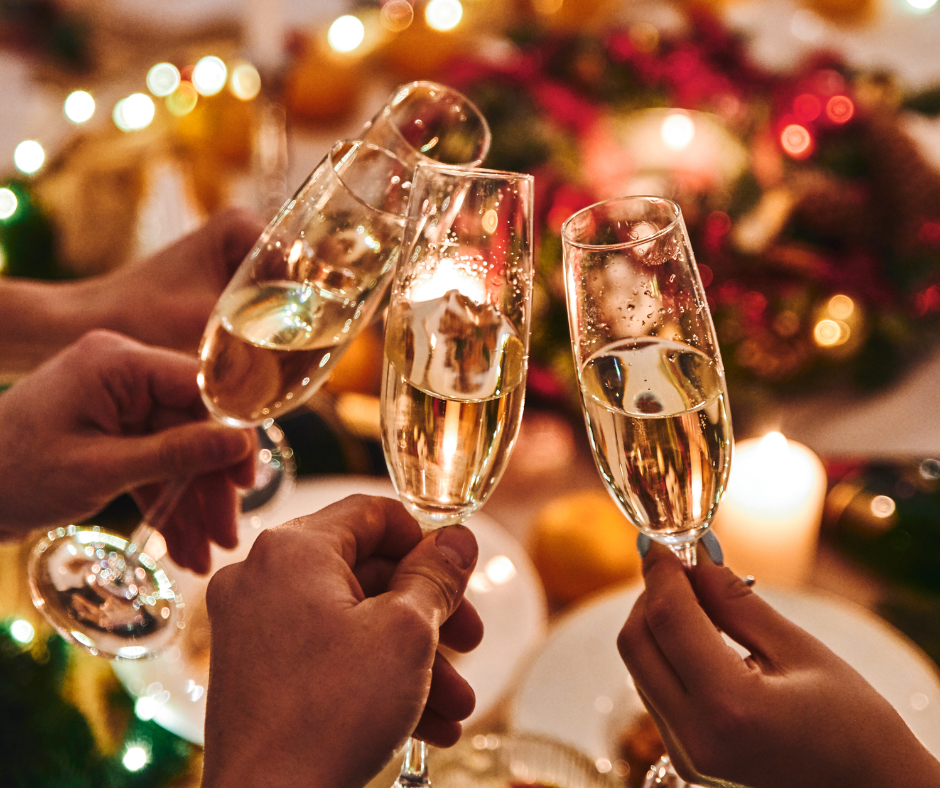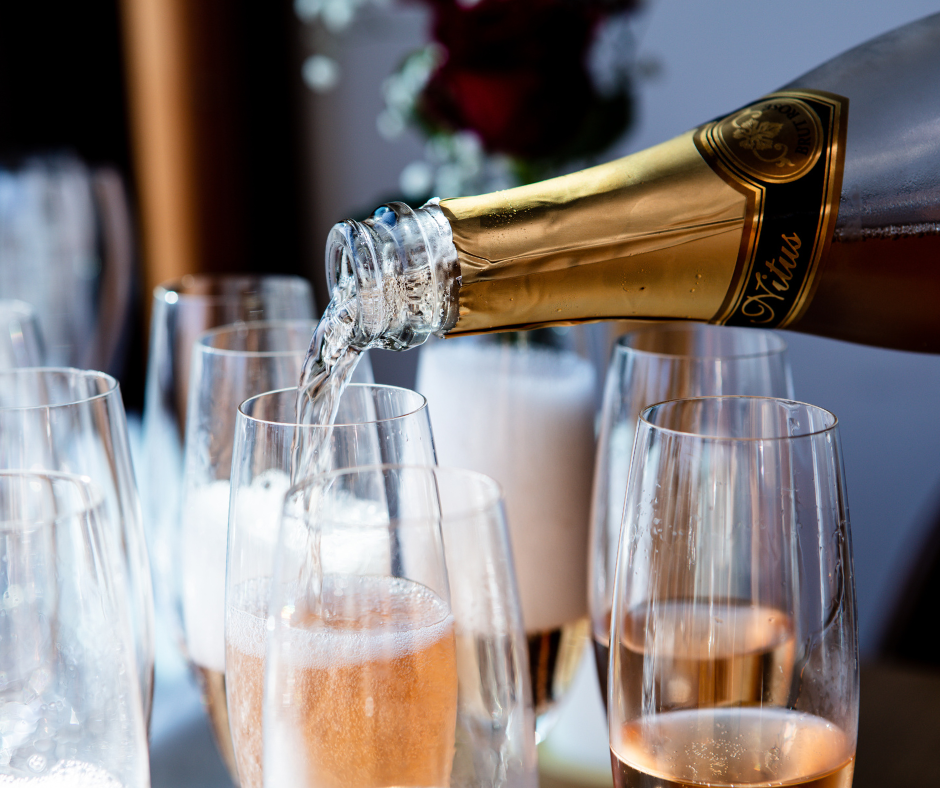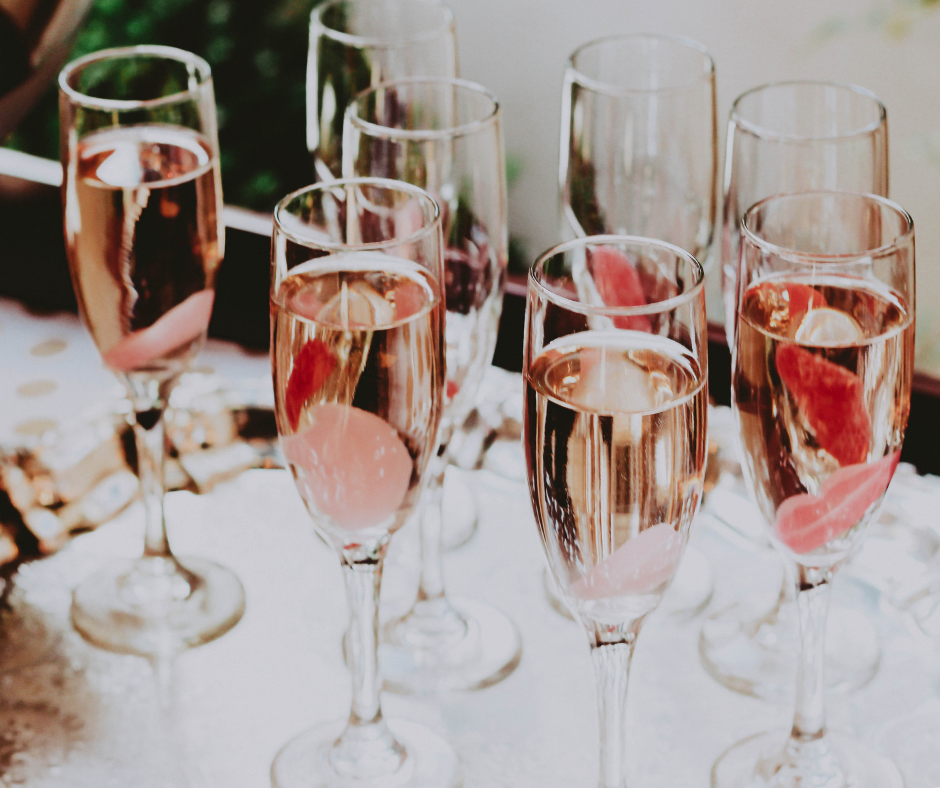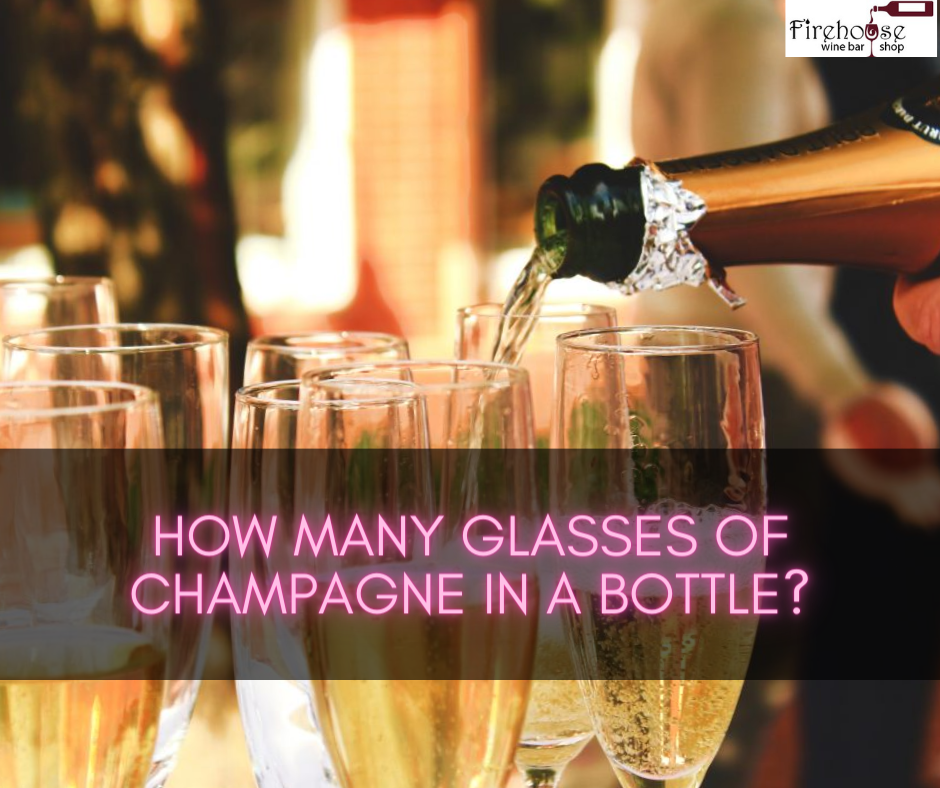Introduction
Champagne is a luxurious and elegant drink that is enjoyed all around the world. It is a drink for special occasions and an excellent accompaniment to various meals. The bubbles, the aroma, the flavor, and the fizz make champagne unique. It is made from grapes grown in the Champagne region of France, and creating a perfect champagne bottle takes years of practice and patience. But How Many Glasses of Champagne Are in a Bottle? This blog will help you answer this question.
Importance Of Knowing How Many Glasses Of Champagne In A Bottle
Knowing how many glasses of champagne you can pour into a bottle is vital when preparing for an event or gathering. Whether it’s a wedding reception, a family reunion, or a corporate celebration, knowing the number of glasses in a bottle can help you plan the right amount of champagne you need to purchase for your guests. Running out of champagne can be embarrassing, and being prepared is always better.
In a standard 750ml bottle of champagne, there are generally around 5-6 full glasses that can be poured, while a bottle of wine usually has approximately five glasses. However, it’s essential to remember that the glasses’ size and shape can significantly affect the pour. A champagne flute, for instance, is typically smaller than a standard wine glass, which is why the number of glasses you can pour from a bottle of champagne may vary.
Factors Affecting Champagne Pour Calculations
Several factors can influence the number of champagne glasses poured from a bottle, including the size, the shape of the glasses used, and how much champagne is poured into each glass. A standard bottle of champagne (0.75l) consists of about six glasses of champagne, while the Magnum (1.5l) can provide around 12 glasses, and the Jeroboam (3l) can offer up to 24 glasses of champagne. Other factors, such as the temperature of the champagne, the angle at which the bottle is held, and how you pour the champagne, can also impact your pour calculations.
In conclusion, understanding how many glasses of champagne you can pour from a bottle is practical knowledge that can help you plan for any occasion. To ensure enough champagne for your guests, it’s always best to overestimate the amount you need. With this knowledge of champagne-pouring calculations, you can confidently plan your events.

Standard Champagne Pouring Guidelines
How Many Glasses of Champagne in a Bottle?
Knowing ‘How Many Glasses of Champagne in a Bottle?’ can be essential in planning any event. A standard 750ml bottle of champagne usually contains around five to six full glasses, whereas a bottle of wine typically has around five glasses. However, the glasses’ size and shape can significantly affect the pour. For instance, if you use champagne flutes, the pour may vary as the flutes are smaller than the standard wine glasses.
Ideal Number Of Glasses For A Champagne Toast
The general rule of thumb for a champagne toast is to fill the glasses about two-thirds full, which equates to approximately 4-5 ounces or 125-150 ml. The ideal number of glasses for a standard toast is seven glasses per bottle. It is essential to remember the number of guests you are serving and how much champagne they will be consuming.
Factors affecting your pour calculation include the bottle size, the glasses’ shape, and how much champagne is poured into each glass. For instance, larger champagne bottles such as the Magnum (1.5l) can provide around 12 glasses, and the Jeroboam (3l) can offer up to 24 glasses.
In conclusion, understanding how many glasses of champagne can be poured from a bottle is practical knowledge that can help you plan any occasion successfully. Remember that overpouring is better than underpouring, and it is essential to consider the number of guests who will require servings. With this knowledge of champagne-pouring calculations, you can confidently plan your events.
Champagne Flute Sizes And Shapes
Different Types And Sizes Of Champagne Flutes
The capacity of champagne flutes can vary depending on the size and shape of the glass. Some champagne flutes have different shapes, stem lengths, and bowl sizes that can impact the pour. Understanding the size and shape of your champagne flutes can help you estimate the number of glasses filled from each bottle.
How They Affect The Pour And Number Of Glasses Per Bottle
Personal preferences can also affect the number of champagne flutes per bottle. A pour also depends on how much champagne is poured into each glass. Larger champagne bottles, such as the Magnum (1.5l), can provide around 12 glasses, and the Jeroboam (3l) can offer up to 24 glasses. Adjust for pouring style and personal preferences, and always have extra bottles and flutes for a stress-free celebration.
In conclusion, understanding how many glasses of champagne can be poured from a bottle is practical knowledge that can help you plan any occasion successfully. Remember that overpouring is better than underpouring, and it is essential to consider the number of guests who will require servings. With this knowledge of champagne-pouring calculations, you can confidently plan your events.

Other Glassware Options
Alternative Glassware For Serving Champagne
While champagne flutes are the preferred glassware, other options exist for serving champagne. Wine glasses, coupes, and other glassware can work if you don’t have enough flutes. Remember that the pour may differ from a flute, and the number of glasses per bottle may vary depending on the glassware.
In conclusion, understanding how many glasses of champagne can be poured from a bottle is important knowledge when planning any event. Overpouring is better than underpouring, and consider the number of guests who will require servings. With this knowledge of champagne-pouring calculations, you can confidently plan your events.
How To Calculate Champagne Needs For Events
Estimating The Number Of Bottles Needed For A Party Or Wedding
Planning an event that involves champagne can be exciting and stressful at the same time. One of the main concerns is determining how much champagne will be needed to serve all guests. The formula is simple: number of guests x glasses per guest x volume per glass. For example, if there are 200 guests, and they each will have two glasses of 125ml each, the equation becomes 200 x 2 x 125 = 50000 ml. Hence, approximately 40 bottles of champagne will be required for that event.
Accounting For Potential Wastage And Variations In Guest Preferences
It’s important to account for potential wastage when estimating the number of bottles needed for an event. Overpouring is better than underpouring, so to be safe, an extra bottle or two should be included in the order. Additionally, it is helpful to consider guests’ preferences. Some may prefer sparkling water or other non-alcoholic beverages; others may prefer wine or alcoholic beverages.
Tips For Pouring Champagne
After estimating the number of champagne bottles needed for an event, it’s important to know how to pour the bubbly properly to maximize each bottle. Here are some tips for pouring champagne:
Best Practices For Pouring Champagne
Before pouring the champagne, ensure the bottle is chilled to the right temperature, usually 45-48 degrees Fahrenheit. Once ready to pour, follow these steps:
- Hold the bottle at an angle of 45 degrees with your thumb over the cork.
- Loosen the wire cage around the cork without removing it.
- Start twisting the bottle slowly while holding the cork to break the seal.
- Continue twisting the bottle while slowly easing the cork out of the bottle with a gentle “pop” sound.
- Pour the champagne slowly into each glass, aiming for a two-thirds full pour.
Avoiding Spills And Over-pouring
To avoid spilling champagne and over-pouring, remember to:
- Keep the bottle stable by holding it at the base or stem instead of the neck.
- Avoid pouring over the rim of the glass, and aim for the center of the flute.
- Pour the champagne in a single stream while keeping an eye on the fill level in each glass.
- Be cautious when topping off glasses, which can cause overflow and spillage.
Overall, ensuring proper pouring techniques can enhance the champagne-drinking experience for guests and make the event more enjoyable.

Maximizing Champagne Value
When planning an event that includes champagne, it’s important to know how to maximize the value of each bottle. After estimating the number of champagne bottles needed, pouring the bubbly properly is crucial to avoid wasting any. Here are some tips for pouring champagne to ensure you get the most out of your purchase:
Best Practices For Pouring Champagne
The bottle should be chilled to 45-48 degrees Fahrenheit. Once ready to pour, hold the bottle at a 45-degree angle with your thumb over the cork. Loosen the wire cage around the cork without removing it, then start twisting the bottle slowly while holding the cork to break the seal. Continue twisting while slowly easing the cork out of the bottle to create a gentle “pop” sound. Aim for a two-thirds full pour into each flute while holding the bottle at the base or stem to keep it stable.
Avoiding Spills And Over-pouring
To avoid spills and over-pouring, keep an eye on the fill level in each glass and avoid pouring over the rim of the flute. Pour in a single stream while aiming for the center of the glass. Be cautious when topping off glasses, which can cause overflow and spillage.
If budget is a concern, consider stretching it with alternative sparkling wine options like Spanish Cava or Italian Prosecco. These options can provide flavors and effervescence similar to champagne at a lower cost per bottle. Additionally, if you have a limited supply of champagne, consider using it sparingly and making champagne cocktails or mixing it with juices or other mixers to create unique flavor combinations.
With proper pouring techniques and consideration of alternative options, you can ensure you get the most out of your champagne purchase.
Troubleshooting Pouring Issues
When it comes to pouring champagne, there can be various issues. Here are some common issues and how to fix them:
Fixing Common Issues With Champagne Pouring
If you notice that your champagne is foaming up excessively when poured, it may be due to the temperature being too warm. Make sure your champagne is being stored correctly at a constant temperature. Another issue that can arise is flat champagne. This can happen if the bottle has been opened for too long or if there is a fault with the bottle itself. Consume champagne within a day or two after opening to avoid this issue.
Over-fizzing, Flat Champagne, And Other Problems
If you’re experiencing over-fizzing, this could be related to how you pour the champagne. Try pouring more slowly and avoid pouring directly down into the glass, which will create more bubbles. Conversely, if you’re finding that your champagne isn’t fizzing, you may be pouring too slowly or have improperly stored the bottle. In either case, make sure to correct the issue before pouring again.
By troubleshooting common pouring issues like these, you can ensure that your champagne is being poured correctly and to its fullest potential.
Conclusion
When pouring champagne, it’s important to have a good estimate of ‘How Many Glasses of Champagne in a Bottle?’. Generally, you can expect six full glasses of champagne from a standard 750ml bottle. However, for a toast, you should aim for seven glasses to ensure everyone can raise a glass and toast the occasion.
Remember that champagne flutes may hold less than a full glass, so estimating between five and six glasses per bottle is a safe bet. If you’re planning a larger event and need to calculate how many bottles of champagne to order, divide the number of guests by five to get a rough estimate. Just remember, having a little extra is always better than running out!
FAQ: How Many Glasses of Champagne in a Bottle
Q: How many glasses of champagne can I pour from a standard bottle?
A: Typically, a standard 750 mL bottle of champagne can pour enough for six glasses.
Q: What is considered a standard pour for a glass of champagne?
A: The standard pour for a glass of champagne is typically 4 ounces.
Q: Can I pour more glasses for a toast?
A: Yes, if you are planning a toast, it is customary to pour seven glasses of champagne per bottle.
Q: Are these calculations specific to champagne, or can they be applied to other sparkling wines as well?
A: These calculations can generally be applied to any sparkling wine, including prosecco, cava, or other types of sparkling wines.
Q: Where can I find a Champagne Toast Calculator and Event Drinks Guide?
A: You can find a Champagne Toast Calculator and Event Drinks Guide at Plato Hire, a SafeHire Certified company and the Event Equipment Hire Company of the year 2021. They offer catering equipment hire services throughout Warwickshire, Worcestershire, Gloucestershire, Oxfordshire, Staffordshire, Derbyshire, Birmingham, and the West Midlands.

Andre Lotz immigrated to the United States from South Africa almost 20 years ago. Still, he didn’t feel truly at home until he settled in Mobile—a city that reminds him of his childhood home of Fish Hoek on the southern cape of Africa.

